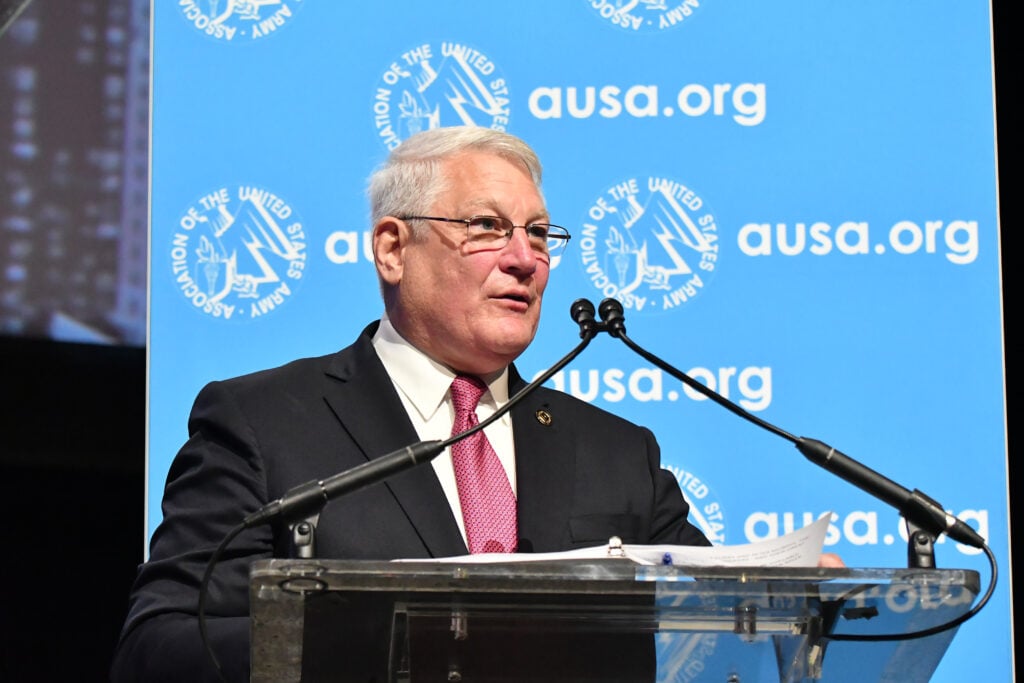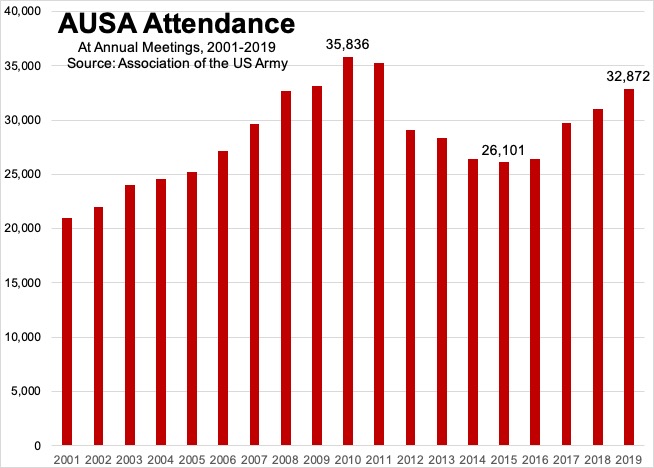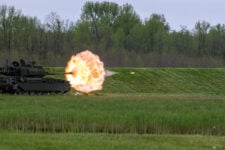
Carter Ham
The leader of the Association of the US Army, Carter Ham, the second head of Africa Command and former Joint Staff director for operations, is in a tough spot, as is the Army. Ham faces the prospect of running the first virtual AUSA annual conference, the powerful association’s biggest moneymaker and its premier educational event. The Army, for its part, faces a flat or declining budget, burgeoning threats across the globe and the prospect of attracting top talent in a society rent by racism and other turmoil. How does Ham think his former service can rise to the occasion? Read on! The Editor.
The 2020 Annual Meeting of the Association of the U.S. Army, comes at a critical time for America’s Army. As we have for 66 years, leaders of today’s Army, soldiers past and present, Army families, government officials and the businesses that support the Army will gather to discuss the service’s future, celebrate and remember, and honor Army and AUSA national award recipients.
But this year, like most things in 2020, our meeting will be different. There won’t be more than 33,000 people gathering at the Walter E. Washington Convention Center in Washington, D.C., reuniting in hotels and restaurants downtown, or sharing — sometimes with only a grain of truth — fond remembrances of their time together as soldiers.

Breaking Defense graphic from AUSA data
Instead, we’ll gather virtually, taking advantage of the innovations of technology to accomplish the same objectives. Although the pandemic forces us to have a virtual meeting rather than our customary large face-to-face gathering, this doesn’t diminish the importance of having an event focused on the future of the world’s most powerful land force. Our meeting, from Oct. 13–16 and built around the theme “The Time is Now,” comes with a sense of urgency because America’s Army faces a myriad of challenges and a narrow window for decisions and action.
At the same time, the Army must keep building momentum on its wish list of essential technologies and capabilities; embrace a new cultural model of diversity, inclusion, equity and fairness; maintain the improved combat readiness it has built in recent years; and continue meeting today’s demands, from supporting COVID-19 response and disaster relief efforts across the country to deploying to meet continuing missions in Iraq, Afghanistan and dozens of countries around the world.
All this must be done while facing flat or, possibly, declining budgets. And the threat is not diminishing. Global competitors—particularly but not only China and Russia—are striving to match or exceed U.S. capabilities to gain military and economic advantages.
Money is always an issue. Like so many past years, fiscal year 2021 begins with neither an appropriation nor policy bill in place to guide Army spending. While we’ve been here many times before, it is never helpful to freeze spending and delay major decisions on acquisitions, exercises and manning for months.
Big decisions loom on ground-breaking advances in technology, systems and weapons as the Army attempts to balance what it needs today to keep America safe and what it will need in the future. Army leaders now recognize they’ll be forced to choose between investing in new, cutting-edge systems for the future or fully maintaining legacy systems that have served the Army so well for a generation. There will be risk involved in whatever course is chosen.
Army leaders have proven that they can make the tough calls. The “night court” process of combing through programs that could be sacrificed to fund modernization has resulted in the Army realigning billions of dollars to fuel the future. But there are limits to how much more can be moved, because the easy, difficult and excruciating choices have already been made, leaving leaders to face mostly bad and very risky ones.
The Army cannot afford to squander the opportunity and momentum it has gained for transformation. Other militaries, great and small, have made or are close to making big leaps ahead in capabilities that would jeopardize the U.S. Army’s claim as the world’s most powerful ground force, reducing deterrence and tempting adversaries.
There is another transformation underway today that also shapes the Army’s future. It involves people, both in how they are treated by the Army and how they treat each other.
Talent management, the art of putting the right person in the right job at the right time, aims to discover the ideal assignment for each soldier and Army civilian based on their education, experience, competence and desire. This holds the promise of building a stronger, better performing Army with a highly satisfied force. This is a promising—and important—area of personnel management.
People have always been a priority in the Army, but cultures and attitudes are changing. We’ve reached a stage where seeing only green isn’t really seeing the Army. The Army is moving to do far more, creating what Army Chief of Staff Gen. James McConville describes as an institution where everyone feels respected, everyone feels included and everyone takes care of each other.
This is something that applies across the entire Army, uniformed and civilian, to build more cohesive teams and to recognize that the military needs to evolve along with American society. The nation is becoming more diverse, and the Army must change along with it to truly represent the nation it serves.
A large bureaucracy often has trouble seeing individuals, but the Army is structured with thousands of small teams and squads, where all it takes is a little time and a little talk to discover the full character of your teammates. This is certainly something requiring more thought and action.
This year has brought unprecedented challenges for our nation, but America’s Army cannot rest. The demands of today and the need to prepare for an increasingly dangerous future loom large. The time is now for the Army to ensure it has the right people in the right jobs, with the right resources and the right technology, with the right training and the right leaders, to face any challenge.






















